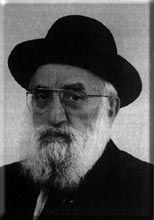Beit Midrash
- Shabbat and Holidays
- Jewish Holidays
- Tu Bishvat
The Torah study is dedicatedin the memory of
Revital Bat Lea
Rabbi Yitzchak Meir began to elaborate upon a Talmudic text dealing with the New Year for Trees (Tu BiShvat). He asked questions and answered them, raised difficulties and brought solutions. Rabbi Menachem Mendel said to him, "Were we in the land of Israel, it would be sufficient for us to go out to the fields and look at the trees in order to understand the meaning of the Tu BiShvat in its plainest sense.
The occasion around which our story centers is the festive Tu BiShvat meal at which fruits from the land of Israel are eaten. This meal was a very popular custom for Jews of the Diaspora and its purpose was to bond Jews to the land of Israel through eating its fruit. For the occasion, Jews would try to attain a new fruit from the land of Israel upon which they would be able to recite the "Shehecheyanu" blessing.
The Tu BiShvat meal serves to illustrate the tension which existed for Jews in the exile between that which was desired (ratzui) and that which was available (matzui). What was desired was a real and actual bond with the land of Israel, a bond which could find expression through settling the land and eating its fruit; however, in the absence of such actual physical settlement, Jews had to settle for eating the fruits while possessing a desire to achieve a bond with the land of Israel.
As is to be expected with Torah scholars, the meal included more than just the consumption of fruit from Israel; it involved a discussion related to the land of Israel and its commandments. In this manner the participants' bond to the land of Israel received meaning beyond the mere consumption of fruit.
This approach brings to mind the words of the Sages regarding Moses our teacher and foremost prophet, who was unable to enter the land of Israel:
R' Simlai expounded: "Why did Moses our teacher yearn to enter the land of Israel? Did he want to eat of its fruits or satisfy himself from its bounty? But thus said Moses, 'Many precepts were commanded to Israel which can only be fulfilled in the land of Israel. I wish to enter the land so that they may all be fulfilled by me.' "
Those who long for the land of Israel do not do so only with regard to the land's physical dimension, but also for its spiritual dimension. They long to fulfill those commandments which can only be fulfilled therein. A festive Tu BiShvat meal coupled with words of Torah centered on matters related to the commandments of the land of Israel creates, it would appear, a bond between the land's practical and spiritual aspects.
However, it turns out that the Rebbe of Kotzk sees things differently. He wants the real thing. A dissertation praising the land of Israel or an elaborate examination of the precepts which apply to the land cannot serve to replace the actual fulfillment of those commandments. This is what Moses longed for: After having given so many commandments to the nation of Israel, he feels unable to remain in the realm of the theoretical. Moses wishes to enter the realm of actual practice, for "great is study which leads to practice."
All of this takes on greater significance when it comes from the school of Hassidism. It was Hasidism which taught that man can find sanctity even in physical acts. This is the path to rectifying existence as a whole, and when it is applied to the land of Israel it becomes doubly clear. Hassidic thought sees the land of Israel as a place where even just working the soil is considered sacred labor. Is it possible, then, to deal with the land of Israel on a theoretical level when it in fact embodies the idea of sanctity being revealed via physical activity?
Our story spells an encounter between two unique personalities: the Rebbe of Kotzk and Chiddushei HaRim. The dialog between them fits their personalities and approaches. Chiddushei HaRim is renowned world wide for his scholarship, his mental acuity, and his great breadth of knowledge. While still young he was dubbed "the Warsaw prodigy." When the Rebbe of Kotzk desires a scholarly discussion dealing with the commandments of the land of Israel, he turns to "the Warsaw prodigy." Here, however, the unique personality of the Rebbe of Kotzk is awakened: he, whose whole concern is objective truth, is not satisfied with a mere dissertation on the New Year of the Trees. He wants the real thing - the land of Israel itself, the Israel which exists in a real, physical sense.
When dealing with how theory and practice relate to the land of Israel, it is difficult to conclude without first drawing upon the writings of Rabbi Nachman of Breslov:
When he was in the land of Israel, some of the important people there told him that at one time they could not imagine that the land of Israel actually existed in this world. They believed that Israel was another world altogether . . . until they arrived and saw with their own eyes that Israel actually exists . . . just like other countries, and its earth appears just like the earth of other countries . . . for, in truth, there is no outward difference between the land of Israel and other countries. Yet, despite this, it is extremely holy, bearing the utmost sanctity, and fortunate is he who merits walking in the land of Israel even four cubits (Likutei Moharan).
---
Translated Talmudic sources in the above article were taken from, or based upon, Davka's Soncino Judaic Classics Library (CD-Rom).
Ecology, Past, Present and Future
Rabbi Gideon Weitzman | 5765

The Month of Tevet and Angry Demonstrations
Rabbi Haggai Lundin | Tevet 5783























